Dimosthenis Karatzas
Fine-grained Image Classification and Retrieval by Combining Visual and Locally Pooled Textual Features
Jan 14, 2020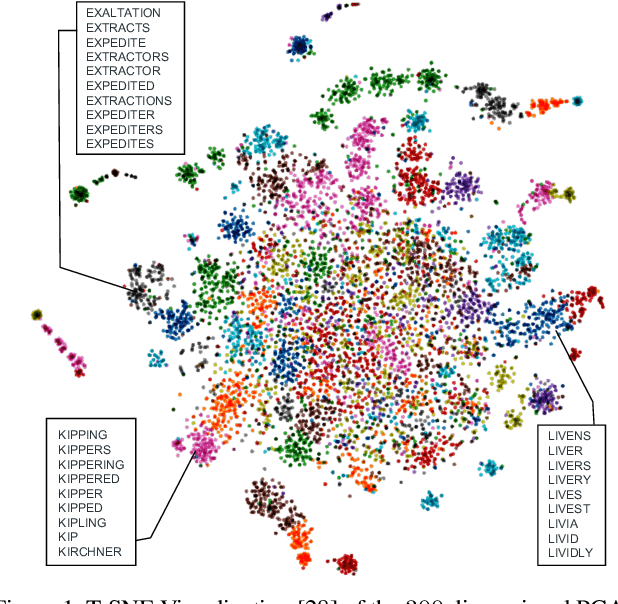

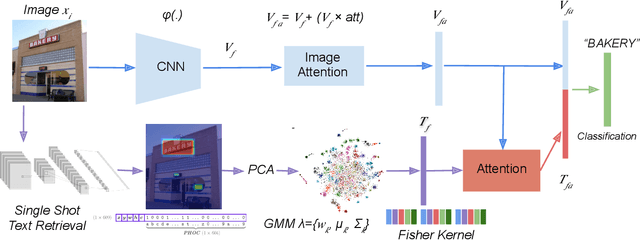
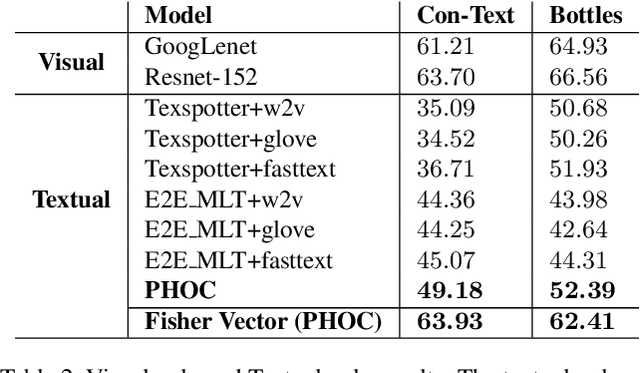
Abstract:Text contained in an image carries high-level semantics that can be exploited to achieve richer image understanding. In particular, the mere presence of text provides strong guiding content that should be employed to tackle a diversity of computer vision tasks such as image retrieval, fine-grained classification, and visual question answering. In this paper, we address the problem of fine-grained classification and image retrieval by leveraging textual information along with visual cues to comprehend the existing intrinsic relation between the two modalities. The novelty of the proposed model consists of the usage of a PHOC descriptor to construct a bag of textual words along with a Fisher Vector Encoding that captures the morphology of text. This approach provides a stronger multimodal representation for this task and as our experiments demonstrate, it achieves state-of-the-art results on two different tasks, fine-grained classification and image retrieval.
ICDAR 2019 Robust Reading Challenge on Reading Chinese Text on Signboard
Dec 20, 2019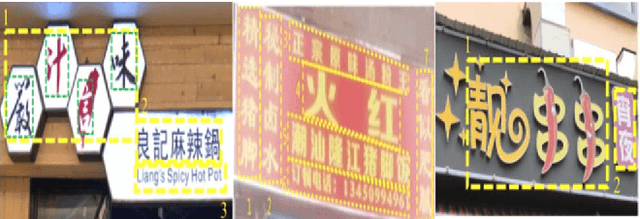
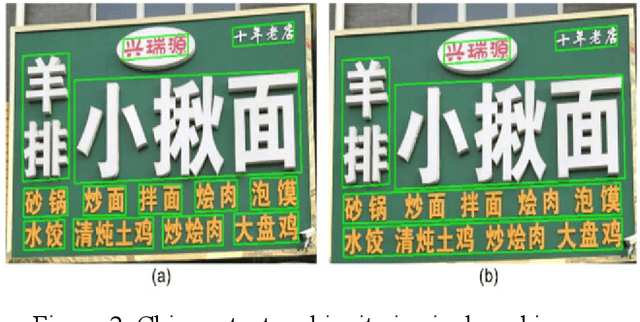
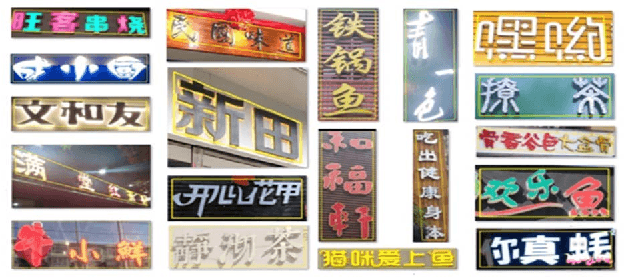

Abstract:Chinese scene text reading is one of the most challenging problems in computer vision and has attracted great interest. Different from English text, Chinese has more than 6000 commonly used characters and Chinesecharacters can be arranged in various layouts with numerous fonts. The Chinese signboards in street view are a good choice for Chinese scene text images since they have different backgrounds, fonts and layouts. We organized a competition called ICDAR2019-ReCTS, which mainly focuses on reading Chinese text on signboard. This report presents the final results of the competition. A large-scale dataset of 25,000 annotated signboard images, in which all the text lines and characters are annotated with locations and transcriptions, were released. Four tasks, namely character recognition, text line recognition, text line detection and end-to-end recognition were set up. Besides, considering the Chinese text ambiguity issue, we proposed a multi ground truth (multi-GT) evaluation method to make evaluation fairer. The competition started on March 1, 2019 and ended on April 30, 2019. 262 submissions from 46 teams are received. Most of the participants come from universities, research institutes, and tech companies in China. There are also some participants from the United States, Australia, Singapore, and Korea. 21 teams submit results for Task 1, 23 teams submit results for Task 2, 24 teams submit results for Task 3, and 13 teams submit results for Task 4. The official website for the competition is http://rrc.cvc.uab.es/?ch=12.
Exploring Hate Speech Detection in Multimodal Publications
Oct 09, 2019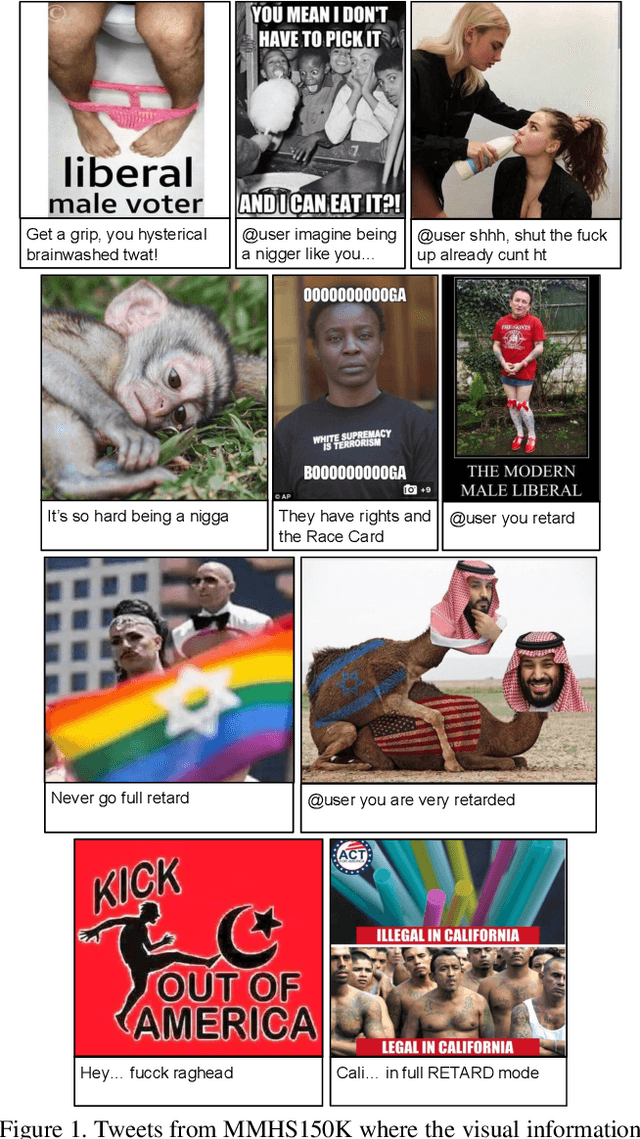
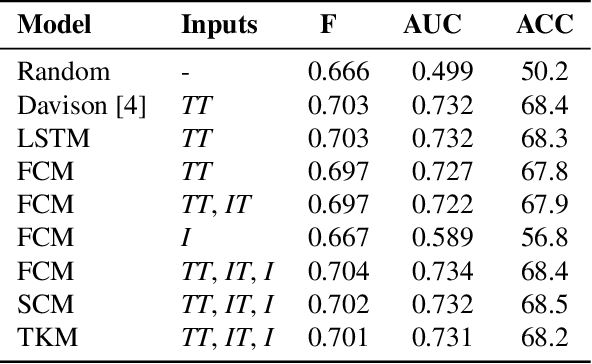
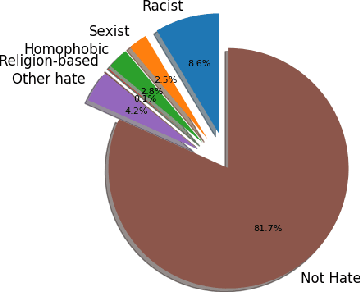

Abstract:In this work we target the problem of hate speech detection in multimodal publications formed by a text and an image. We gather and annotate a large scale dataset from Twitter, MMHS150K, and propose different models that jointly analyze textual and visual information for hate speech detection, comparing them with unimodal detection. We provide quantitative and qualitative results and analyze the challenges of the proposed task. We find that, even though images are useful for the hate speech detection task, current multimodal models cannot outperform models analyzing only text. We discuss why and open the field and the dataset for further research.
ICDAR 2019 Competition on Large-scale Street View Text with Partial Labeling -- RRC-LSVT
Sep 17, 2019
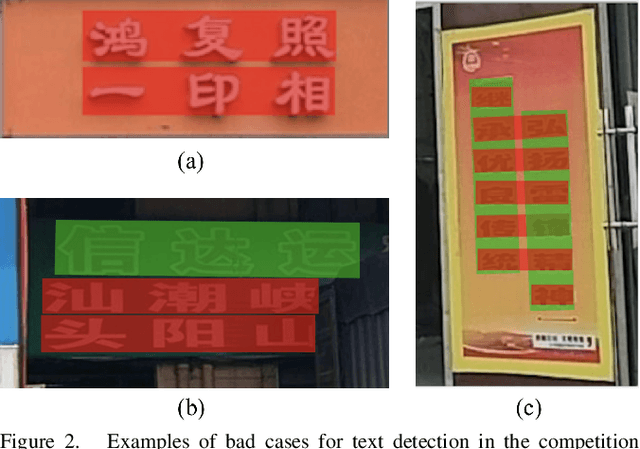
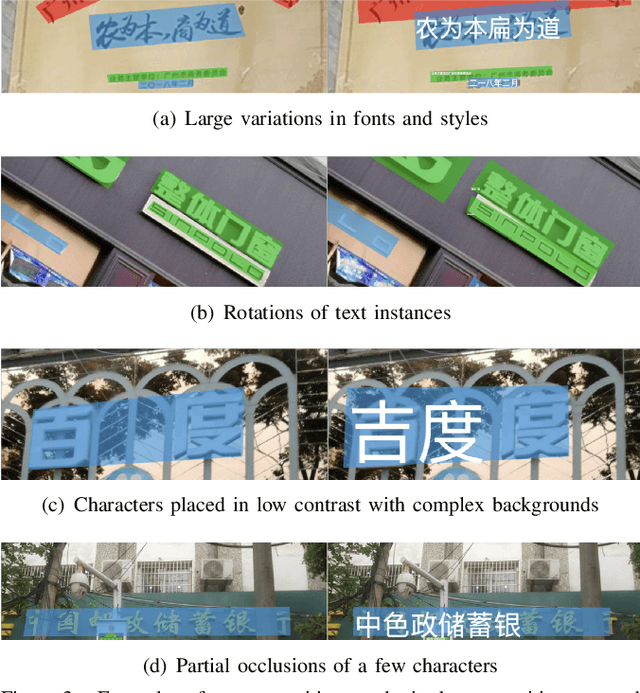
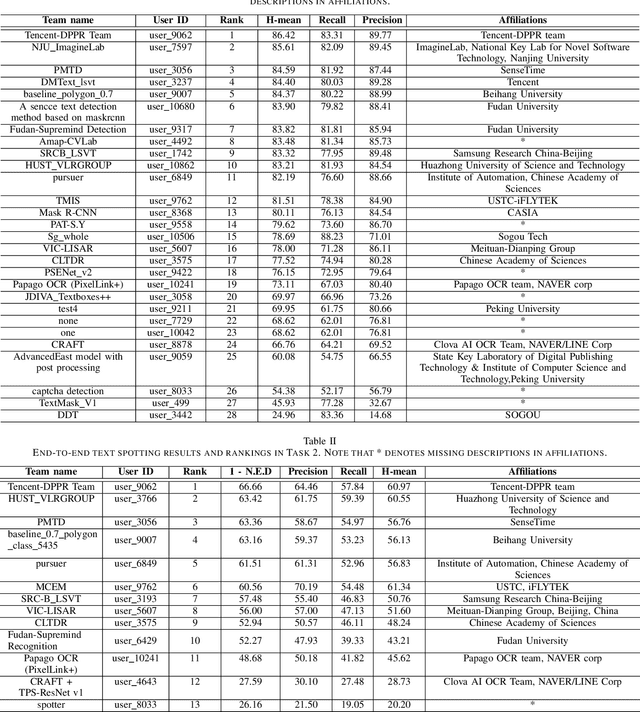
Abstract:Robust text reading from street view images provides valuable information for various applications. Performance improvement of existing methods in such a challenging scenario heavily relies on the amount of fully annotated training data, which is costly and in-efficient to obtain. To scale up the amount of training data while keeping the labeling procedure cost-effective, this competition introduces a new challenge on Large-scale Street View Text with Partial Labeling (LSVT), providing 50, 000 and 400, 000 images in full and weak annotations, respectively. This competition aims to explore the abilities of state-of-the-art methods to detect and recognize text instances from large-scale street view images, closing the gap between research benchmarks and real applications. During the competition period, a total of 41 teams participated in the two proposed tasks with 132 valid submissions, i.e., text detection and end-to-end text spotting. This paper includes dataset descriptions, task definitions, evaluation protocols and results summaries of the ICDAR 2019-LSVT challenge.
ICDAR2019 Robust Reading Challenge on Arbitrary-Shaped Text (RRC-ArT)
Sep 16, 2019
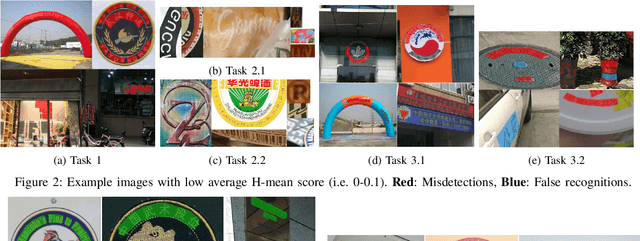

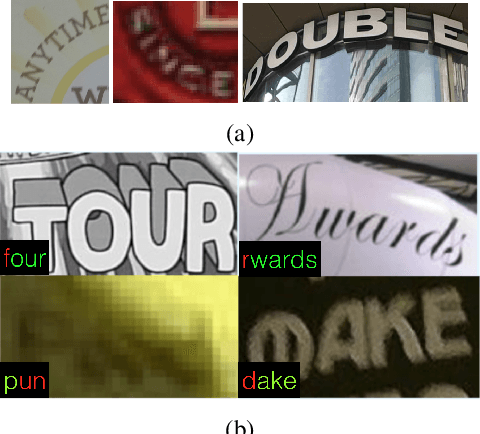
Abstract:This paper reports the ICDAR2019 Robust Reading Challenge on Arbitrary-Shaped Text (RRC-ArT) that consists of three major challenges: i) scene text detection, ii) scene text recognition, and iii) scene text spotting. A total of 78 submissions from 46 unique teams/individuals were received for this competition. The top performing score of each challenge is as follows: i) T1 - 82.65%, ii) T2.1 - 74.3%, iii) T2.2 - 85.32%, iv) T3.1 - 53.86%, and v) T3.2 - 54.91%. Apart from the results, this paper also details the ArT dataset, tasks description, evaluation metrics and participants methods. The dataset, the evaluation kit as well as the results are publicly available at https://rrc.cvc.uab.es/?ch=14
ICDAR2019 Robust Reading Challenge on Multi-lingual Scene Text Detection and Recognition -- RRC-MLT-2019
Jul 01, 2019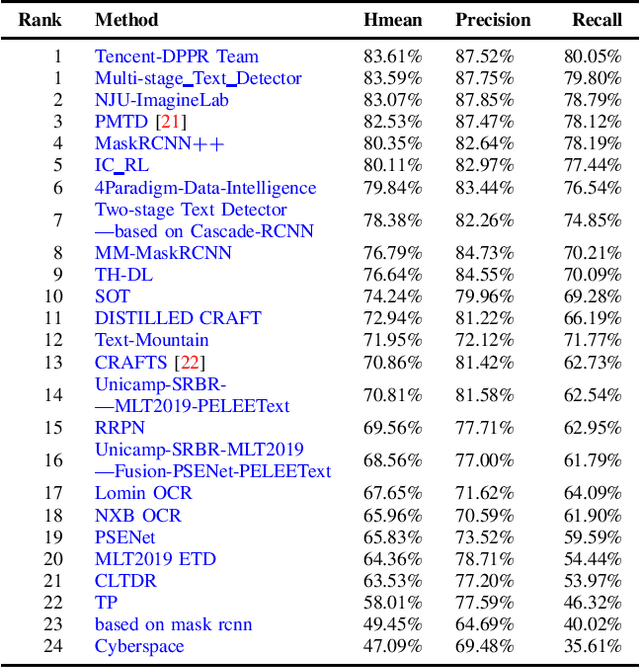
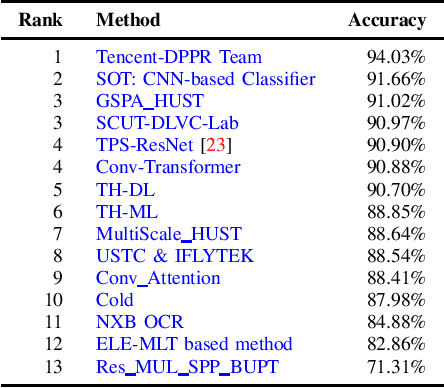
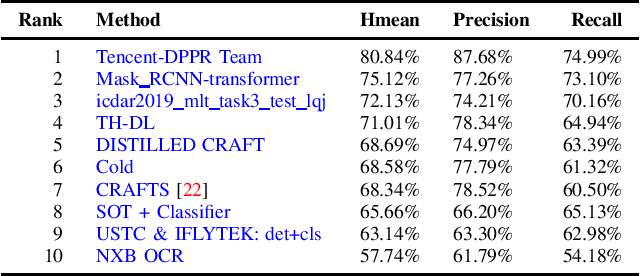
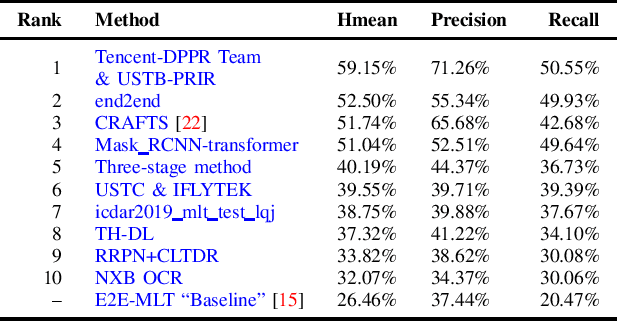
Abstract:With the growing cosmopolitan culture of modern cities, the need of robust Multi-Lingual scene Text (MLT) detection and recognition systems has never been more immense. With the goal to systematically benchmark and push the state-of-the-art forward, the proposed competition builds on top of the RRC-MLT-2017 with an additional end-to-end task, an additional language in the real images dataset, a large scale multi-lingual synthetic dataset to assist the training, and a baseline End-to-End recognition method. The real dataset consists of 20,000 images containing text from 10 languages. The challenge has 4 tasks covering various aspects of multi-lingual scene text: (a) text detection, (b) cropped word script classification, (c) joint text detection and script classification and (d) end-to-end detection and recognition. In total, the competition received 60 submissions from the research and industrial communities. This paper presents the dataset, the tasks and the findings of the presented RRC-MLT-2019 challenge.
ICDAR 2019 Competition on Scene Text Visual Question Answering
Jun 30, 2019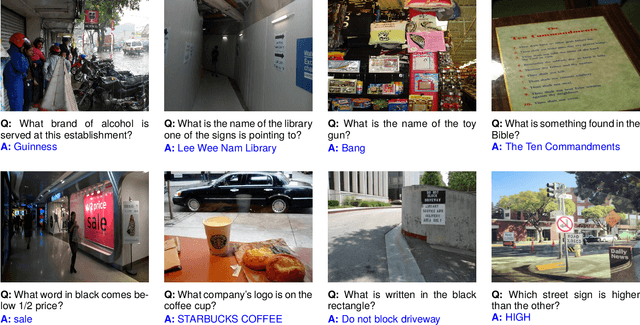
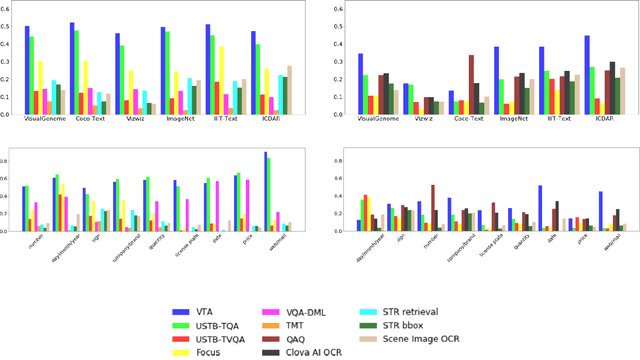

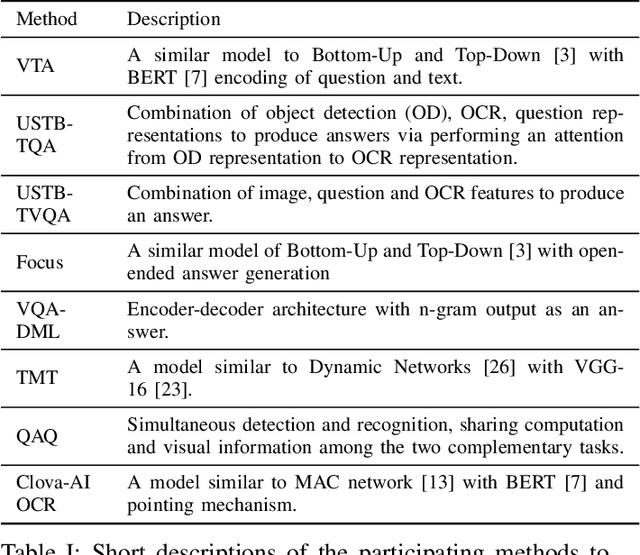
Abstract:This paper presents final results of ICDAR 2019 Scene Text Visual Question Answering competition (ST-VQA). ST-VQA introduces an important aspect that is not addressed by any Visual Question Answering system up to date, namely the incorporation of scene text to answer questions asked about an image. The competition introduces a new dataset comprising 23,038 images annotated with 31,791 question/answer pairs where the answer is always grounded on text instances present in the image. The images are taken from 7 different public computer vision datasets, covering a wide range of scenarios. The competition was structured in three tasks of increasing difficulty, that require reading the text in a scene and understanding it in the context of the scene, to correctly answer a given question. A novel evaluation metric is presented, which elegantly assesses both key capabilities expected from an optimal model: text recognition and image understanding. A detailed analysis of results from different participants is showcased, which provides insight into the current capabilities of VQA systems that can read. We firmly believe the dataset proposed in this challenge will be an important milestone to consider towards a path of more robust and general models that can exploit scene text to achieve holistic image understanding.
Selective Style Transfer for Text
Jun 04, 2019
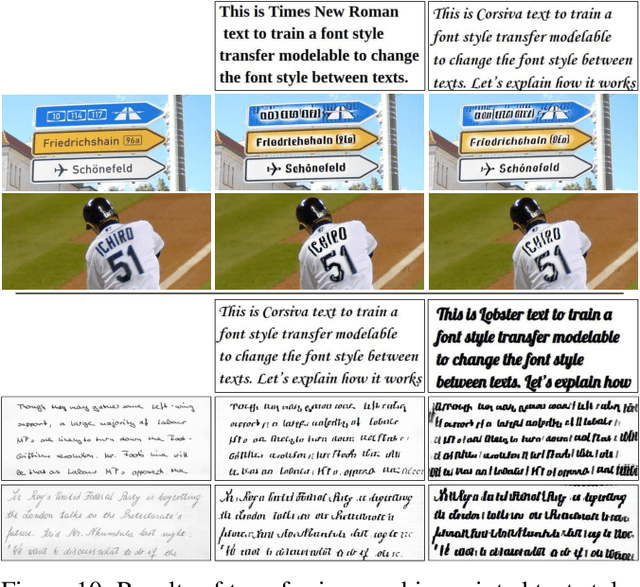
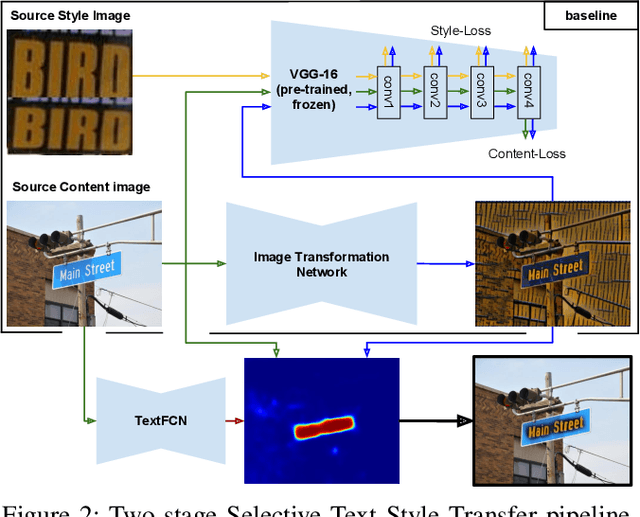
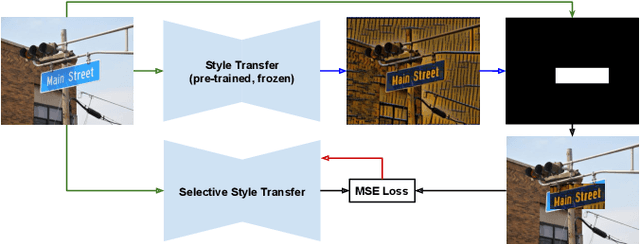
Abstract:This paper explores the possibilities of image style transfer applied to text maintaining the original transcriptions. Results on different text domains (scene text, machine printed text and handwritten text) and cross modal results demonstrate that this is feasible, and open different research lines. Furthermore, two architectures for selective style transfer, which means transferring style to only desired image pixels, are proposed. Finally, scene text selective style transfer is evaluated as a data augmentation technique to expand scene text detection datasets, resulting in a boost of text detectors performance. Our implementation of the described models is publicly available.
Scene Text Visual Question Answering
May 31, 2019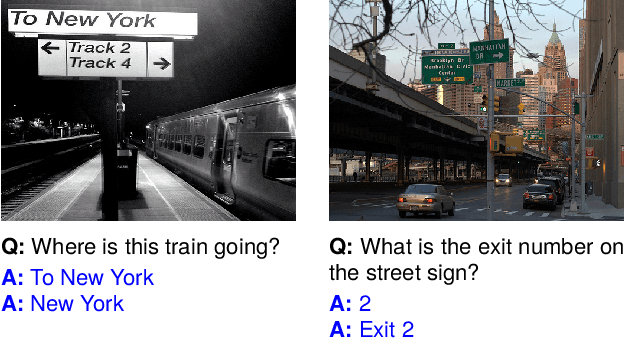
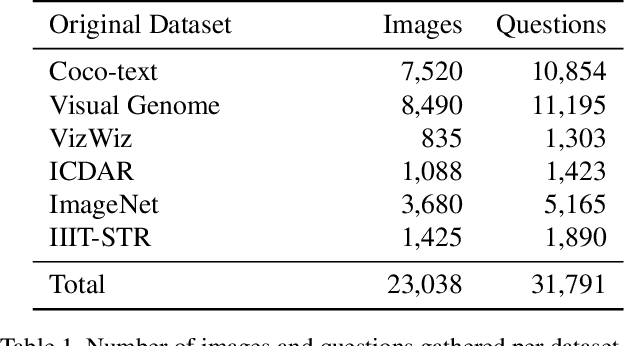
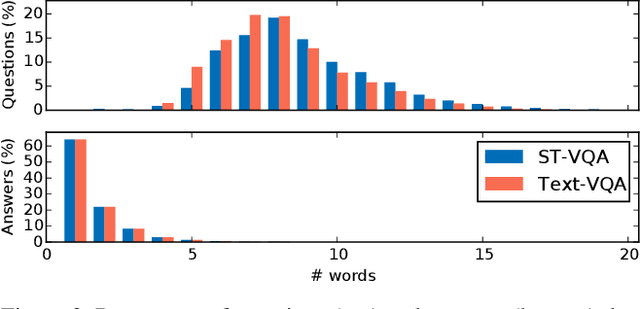
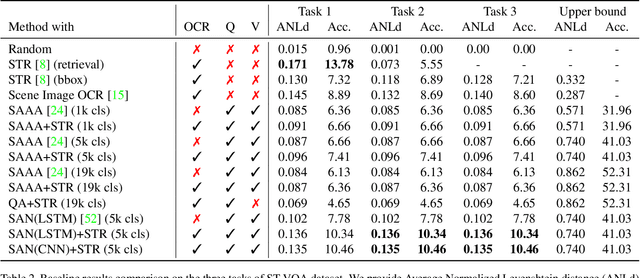
Abstract:Current visual question answering datasets do not consider the rich semantic information conveyed by text within an image. In this work, we present a new dataset, ST-VQA, that aims to highlight the importance of exploiting high-level semantic information present in images as textual cues in the VQA process. We use this dataset to define a series of tasks of increasing difficulty for which reading the scene text in the context provided by the visual information is necessary to reason and generate an appropriate answer. We propose a new evaluation metric for these tasks to account both for reasoning errors as well as shortcomings of the text recognition module. In addition we put forward a series of baseline methods, which provide further insight to the newly released dataset, and set the scene for further research.
Good News, Everyone! Context driven entity-aware captioning for news images
Apr 02, 2019
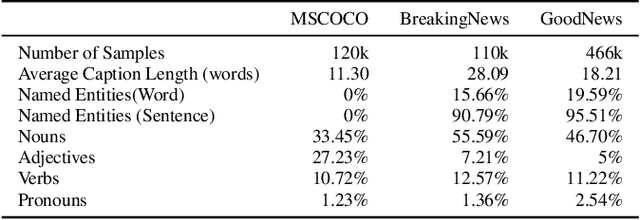
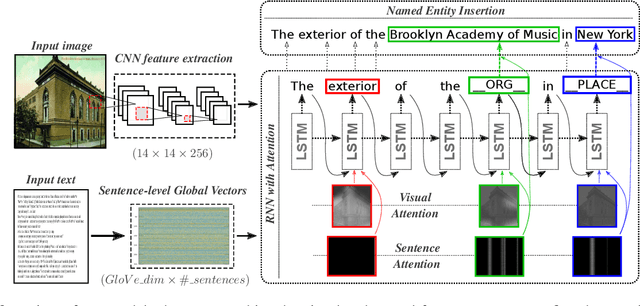

Abstract:Current image captioning systems perform at a merely descriptive level, essentially enumerating the objects in the scene and their relations. Humans, on the contrary, interpret images by integrating several sources of prior knowledge of the world. In this work, we aim to take a step closer to producing captions that offer a plausible interpretation of the scene, by integrating such contextual information into the captioning pipeline. For this we focus on the captioning of images used to illustrate news articles. We propose a novel captioning method that is able to leverage contextual information provided by the text of news articles associated with an image. Our model is able to selectively draw information from the article guided by visual cues, and to dynamically extend the output dictionary to out-of-vocabulary named entities that appear in the context source. Furthermore we introduce `GoodNews', the largest news image captioning dataset in the literature and demonstrate state-of-the-art results.
 Add to Chrome
Add to Chrome Add to Firefox
Add to Firefox Add to Edge
Add to Edge